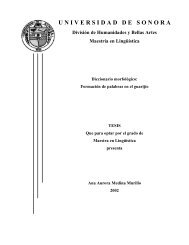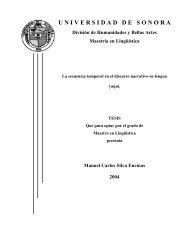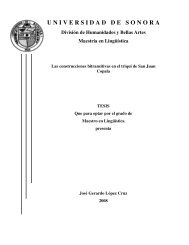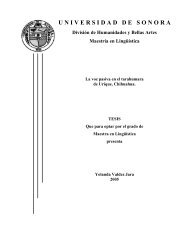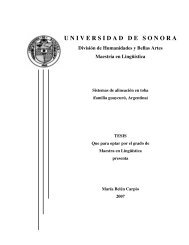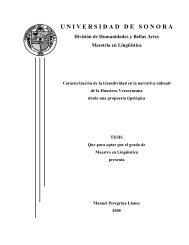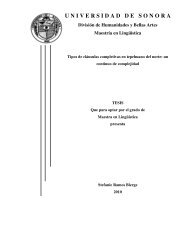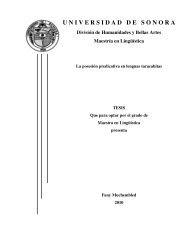Seminario de complejidad sintáctica 2006 - Maestría en Lingüística ...
Seminario de complejidad sintáctica 2006 - Maestría en Lingüística ...
Seminario de complejidad sintáctica 2006 - Maestría en Lingüística ...
Create successful ePaper yourself
Turn your PDF publications into a flip-book with our unique Google optimized e-Paper software.
Multiple routes to clause union: the diachrony of<br />
syntactic complexity<br />
T. Givón<br />
Universidad <strong>de</strong> Oregon, Rancho Nube Blanca<br />
tgivon@uoregon.edu<br />
This paper proceeds with two main premises in mind, both of<br />
which, for better or worse, I have always be<strong>en</strong> inclined to take<br />
for granted:<br />
(i) The ph<strong>en</strong>om<strong>en</strong>on of complex predicates is better viewed in<br />
the broa<strong>de</strong>r context of syntactic complexity; more specifically,<br />
of syntactically-complex clauses and cognitivelycomplex<br />
ev<strong>en</strong>ts.<br />
(ii) A synchronic typology, of whatever syntactic domain, can<br />
only make full s<strong>en</strong>se from a diachronic perspective; that<br />
is, as a typology of the diachronic pathways that gave rise<br />
to the attested synchronic types within the domain.<br />
In the course of trying to show that both my premises are<br />
emin<strong>en</strong>tly s<strong>en</strong>sible, and that they are in<strong>de</strong>ed applicable to the<br />
more-narrowly construed topic of complex predicates, I will<br />
first outline the two main diachronic sources of complex<br />
clauses--thus the two main pathways to clause union--verbphrase<br />
embedding ('complem<strong>en</strong>tation') and clause chaining.<br />
For each of the two, I will suggest, the syntactic properties of<br />
the resultant ('synchronic') complex clause are in large part<br />
predictable from its diachronic source.<br />
11



